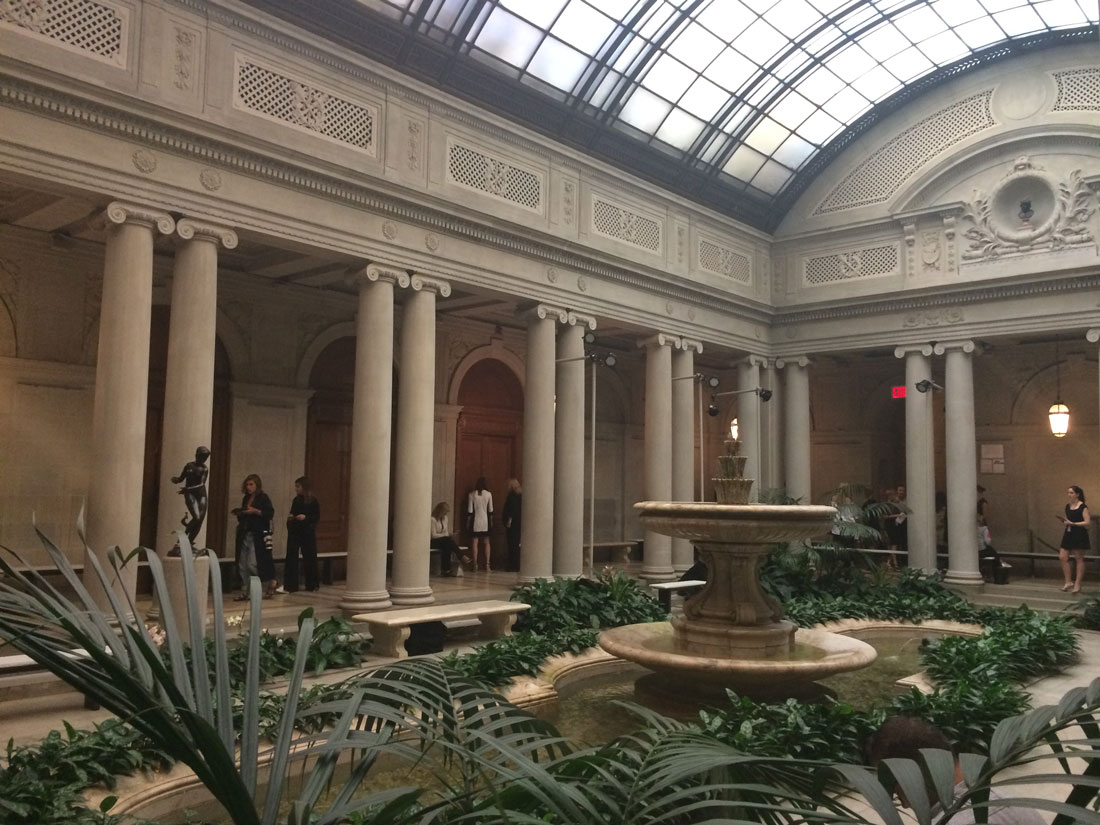By Alexandra Whittaker
When most major fashion designers create their looks for New York Fashion Week, they have a specific idea or theme in mind. But this year, design powerhouse Carolina Herrera decided to go in a different direction.
Herrera’s fall/winter 2016 ready-to-wear collection, shown at The Frick Collection’s tranquil garden courtyard in New York last Monday and broadcast online, purposefully lacked a singular focus. Herrera told Vogue she wants the Carolina Herrera brand to look toward the future by refusing to be inspired by what anyone has done before.
Herrera’s forward-thinking collection may have been officially themeless, but as the models, led by supermodel Karlie Kloss, strode down the runway to the soft lullabies of AaRON and Mint Julep, distinct themes emerged.
Soft hues and mod designs dominated the first looks, with muted taupes that were a deep contrast to the bubblegum-pink of Herrera’s most recent spring/summer collection.

Unlike a typical Carolina Herrera show, color came into play only late to the collection. Deep plums, light peaches and mint greens began seeping into the subdued outfits via shoes, cartoon-like lining on dresses and sparkly embellishments on symmetrical tops.
Fur was also featured prominently, a dramatic departure from Herrera’s previous collections in which menswear-inspired coats dominated the outerwear.
Carolina Herrera is known for her feminine silhouettes and timelessly classic pieces, and both were present in the fall/winter collection. There were button-down dresses, A-line honey-colored dresses with glossy flower trimmings, and heeled Oxford shoes with small cutouts on the sides.
Most of the collection had an experimental feel, but the final big-occasion dresses were classic Carolina. The models emerged in flowing, Grecian goddess gowns with keyhole necklines and sheer billowing skirts. Their open backs, held up by thin adjustable shoulder straps, caused some models, including Kloss, to readjust them during the finale walk.
As a whole, this collection felt like a futuristic and monochromatic take on Herrera’s signature style, but the model’s makeup didn’t fit the experimental mood. Their copper-colored, shimmery eye shadow and heavily contoured cheekbones made them look gaunt, washed out, and sunken in.
Speaking of experiments and adjustments, Herrera fans who watched the collection online might have had some difficulties. Watching the show in real-time was easy enough. Viewers were able to chat on social media platforms using the hashtag #HerreraLive and see the clothes as they came down the runway. But seeing the collection clearly was difficult. The dim lights at the Frick made the clothes look darker on video than they were in person. It was difficult to see the garments’ details, and the models’ heels looked like flats on video because of the camera angle. Ever the experimenter, after the initial video broadcast, Herrera offered fans a 360° experience of the show on her website, setting her apart from other New York Fashion Week designers who stuck mainly to video only.

Despite Herrera’s claim of no theme, her collection did have constants in it—the embroidery, the cutouts, the boxy tunics and, of course, the elegant, award-show-worthy gowns that will undoubtedly be seen on a red carpet somewhere within the next year.
Theme or no theme, the combination of the eclectic looks, the ethereal music and the Frick’s serene inner garden and pond created a classic Carolina moment.

